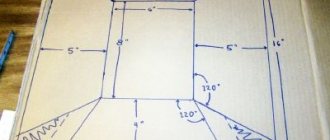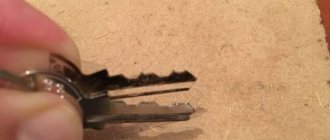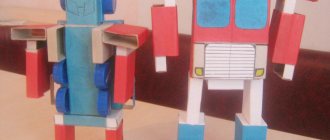How to replace a mediator
| How can I replace a guitar pick? | Description |
| Old SIM card | The principle of using these analogues is the same. It is necessary to cut out the mediator from them. |
If you wish, you can download a template on the Internet and make a “mediator” from any material.
In some cases, playing the guitar with your fingernails is acceptable. It is not recommended to choose a coin; it can break strings that are too thin.
All characteristics of the pick, such as its thickness, material and shape, directly affect the sound of the guitar. The mediator quite often gets lost or erased, so the question of what can replace a guitar mediator is very relevant.
This tool can be made independently from available materials, the main thing is that the material is flexible and durable.
How to choose a guitar pick. Introductory information
One of the main tools for producing sound is a mediator. This is a thin plate made of natural or synthetic material, which is struck on the strings, thus producing sound. At the same time, it comes out much sharper and tougher than when playing with fingers, due to a stronger attack - and that is why at the moment the plectrum is used even when playing complex picking - although in this case it is put on the fingers, as when playing a banjo.
In this article we will tell you which mediator to choose,
We will give a brief description of almost all of their types, and also summarize everything that has been said and prepare advice on which plectrum is best to buy.
Which material to choose
Each material has its own characteristics that will affect the sound.
- Metal – this type of pick provides a sharp and bright sound, but it will not be the best solution for an acoustic guitar.
- Leather – Cut a pick from a leather belt. It will help you get high-quality bass sound. The leather makes the guitar sound muffled and thick.
- Plastic – any plastic product is suitable for such a mediator. You just need to experiment with thickness and shape, choosing the most successful option for yourself.
- A plastic card will be the most successful solution for making a mediator, since it will fully correspond to the parameters of the original.
Some tips
To make a metal pick, it is better to use metal scissors; it will not be possible to cut it with ordinary ones.
Use a special cutter to trim leather. To make the pick easier and more comfortable to hold in your fingers, attach several staples to it using a stapler or wrap it with electrical tape.
Mediator from a tablet folder
The most ideal material for a homemade mediator would be polyvinyl chloride, from which tablet folders are made. To make a pick, follow these simple instructions.
- Cut one corner of the folder using regular scissors.
- The result will be a triangle with too sharp corners.
- Using the same scissors, cut off the corner from the pick.
- The mediator is ready.
The main drawback is that they are not very comfortable to play with. However, you can constantly cut a new tool while achieving maximum comfort.
Finding a replacement pick is quite easy. Anything that can be held with two fingers is suitable for this purpose. It can be cut from a plastic card, a ruler, or even a nylon cap. You just need to use your imagination and experiment with each option.
Source
DIY epoxy resin pick
So let's get started. We take a die from the black Hornbeam and draw out this piece.
And after that we take and cut the piece into two parts. Then we glue a piece of black Hornbeam to a small plexiglass.
Next, we make a small bath and put a piece of Hornbeam in the resin water.
Add a solvent and make the background red, mix orange, pink and white colors separately to get a beautiful shade.
After two days, the results are obvious.
We use coarse sandpaper to smooth both sides.
Then we glue a pattern that looks like a mediator.
We cut out a rough blank from the material.
We sharpen the product using a file.
And then we give the finished look with fine sandpaper and oil. We wet the sides of the mediator in oil, and then rub them with sandpaper.
The result is obvious.
DIY disc mediator
A problem that often plagues guitarists is the constant loss of picks.
No matter how hard we try to preserve the mediator by placing it in a prominent place, sooner or later it disappears. I’m usually too lazy to go shopping for a new one, and the nearest store is a bit far away.
To make a mediator, we will need an unnecessary plastic card or a used CD.
We apply an old pick or copy it from the Internet, and then cut out a pattern from paper and outline the outline.
If a CD is used as the material, outline the outline with a sharp object. For the card, you can get by with a pencil. We cut, but not along the contour, but around it.
Then we level it, we do this work with a file, but you can also use a nail file to process your nails.
DIY mediator photo:
How to make a pick with your own hands
Today every third teenager has a guitar, and adults are not averse to remembering their youth and singing songs with a guitar, especially if they are in the mood for it. In addition to the guitar and the ability to use it, in most cases a mediator is needed. We will tell you how to make a mediator or blector from scrap materials in this article.
Please watch the video and you will understand how quickly and easily you can make a pick with your own hands from available materials.
We will need:
- a pointed metal stick or pin; - old plastic card; - an old pick or shape that will need to be traced; - felt-tip pen; - scissors.
So what do we need to do.
First of all, we take a felt-tip pen and a shape and trace on an old plastic card the shape of the pick that we will need to cut out. If you have some interesting cards, you can easily make a pick with a pattern.
The next step is to carefully cut out our future pick along the line. It is very important that the line is clear, but not very deep (this is the case if you outline the workpiece not with a felt-tip pen but with a pin or sharp stick); if the line is deep, then you will have to cut exactly along it, otherwise the edges of the mediator will be stick out a lot. But then we will still polish it and bring it into an even shape.
We should have a blank, the edges of which will need to be rubbed. Now we take paper or a rag or even a carpet and begin to rub out all the unevenness. All edges rub easily, so you need to be very careful, one wrong move and you could have a sharp corner on your lecture.
The edges of the mediator should be rubbed using arcuate movements to give it an even shape.
We ended up with slightly shaggy, but smooth edges of the workpiece.
Now we rub the surface. We place the pick horizontally and begin to rub it on the paper, this way we remove the shaggyness. The remnants of grated plastic are removed from the edges. You can also use a nail file to remove roughness.
That's it, our mediator is ready. They need to play either by fighting or pinching. You can make a large pick or a small one, and the quality of your guitar playing will not change.
Source
Tips for choosing the perfect pick
What to avoid
You should avoid mediators that are uncomfortable for you, as well as advice from other friends. Choose for yourself - because what some people use may not suit you. If they are trying to convince you that a certain mediator is good, but you feel that you simply do not like its sound and the way it lies in your hand, it is best to refuse it.
Options for Beginners
The best option for a beginner is standard-shaped picks made from Tortex or Ultem. Chances are, one of these will definitely suit you. Models made from natural materials are more exotic, and you will have to work with them, whereas the above plectrums never fail.
Options for advanced guitarists
If you want to try something new, then the best way to do this is to simply buy a lot of unusual and unfamiliar picks. Listen to them, play a few rehearsals, and only after that make a choice.
How to make a guitar pick with your own hands?
It is much easier to go to any musical instrument store and purchase a ready-made accessory. But a true musician will not resort to a simple solution. It is important that the plectrum fits the guitarist perfectly:
- was of the correct shape;
- the coating did not irritate the fingers;
- had the required thickness;
- didn't slip in my hands.
Unenlightened people may decide that it makes no difference which record you hit the strings with. And they will be wrong. A lot depends on the plectrum.
Holder for picks. Mounting and storage options
Guitar deck holder
Stores sell special holders with an adhesive strip that are attached to the guitar and into which the plectrums are placed. You can buy it very cheaply - and at the moment this is the most convenient option.
String holder
The same applies to strings - however, this option is less convenient because it can fall and get lost.
Table holder
This is suitable for home guitarists who practice at their desk. This way the picks will be in one place and you are less likely to lose them.
On the microphone stand
During a concert, you can simply insert the picks onto the microphone stand and they will always be at hand.
Place a pick between the strings
Another option is to attach the plectrum between the strings at the first fret. They will hold up well there.
Case
The simplest thing is to put all the plectrums in a case and take them out as needed. The downside is that they won't always be on hand.
Necessary tools for work
To make the perfect fixture, you must have the following tools:
- The main material from which the plectrum will be made.
- Cardboard or other dense material from which a preliminary shape is cut. An old pick will also work.
- Scissors. You can also use a utility knife, but scissors are safer.
- Dark felt-tip pen or pen.
- Sandpaper.
- File.
Tools should be prepared in advance.
Mediators made from synthetic materials:
Carbon Fiber Weave Picks
These are the thinnest mediators in the world. They are ideal for playing chords, but due to their size they will be a little difficult to play solo parts - simply because they will not be able to provide the attack that is needed.
Thermoplastic - Thermosetting plastic
They have a comfortable bevel and are considered one of the best synthetic picks. Of the minuses, it is worth noting that only thick options are available for sale.
Nylon Picks - Nylon
These are cheap and flexible picks with a pleasant texture to the touch. Actually, they stand out only for their price - because they are fragile and very flexible.
Sound example:
Celluloid Picks - Celluloid
It is also a cheap option that is accessible to almost everyone. In fact, it is precisely these mediators that are now the most popular. The downside is quick wear.
Sound example:
Delrin/Delrex/Acetal Picks - Delrin (Polyformaldehyde - a polymer with increased strength)
A huge number of modern plectrums are made of this material. It doesn't slip in your hands, is very flexible and comfortable, and also has a low price. However, many have noticed that when playing with these picks, the tone becomes less readable.
Tortex Picks – Tortex
This is the main material from which mediators are made. They are extremely cheap and have their own unique tone. Plus, you can get them everywhere. This will be the best choice, which has been tested by more than one professional.
Sound example:
Gravity Picks (Acrylic) – Acrylic
Acrylic picks have high strength and rigidity, due to which they provide a strong and readable attack. The downside is that they slip out of your hands, which makes them uncomfortable.
Sound example:
Dunlop Ultem/Ultex Picks – “Ultem” - innovative heavy-duty plastic (Polyetherimide)
In fact, these plectrums are one of the best options to buy at the moment. Not only are they quite cheap, but they also give that “turtle” tone that many musicians like.
Sound example:
Blue Chip Picks - Heavy Duty Plastic
This is another interesting option. There are a huge number of picks made from this material with a variety of configurations, in addition, the attack gives them an interesting and rich tone. The downside is their cost - they are very expensive.
Sound example:
Wegen Picks - Wegen analogue of composite
Quite a rare material, which, nevertheless, is extremely durable. However, it is not flexible and is suitable for playing solo parts.
Sound example:
Dragon's Heart Picks - Dragon's Heart (Polyamide-imide: graphite, fiberglass, carbon fiber)
These are plectrums that can only be ordered from a couple of sites. Their advantage lies in the fact that, in fact, inside one pick, different options for bevels, points, and the like are collected - so you can even change them during the game for the desired sound.
Sound example:
What can a mediator be made from?
In order for the plectrum to become the main assistant in playing the guitar, you need to choose the right material from which the device will be made. What can a mediator be made from:
- leather;
- metal;
- plastic;
- plastic cards;
- coins;
- tree.
If necessary, you can use computer disks.
Leather plectrums are used to play the gusli and ukulele. Made from very dense fine-fiber leather.
On a note! When used, the accessory does not become shaggy, but grinds down with an even cut.
Thickness is approximately 3.5-4 millimeters. You can make your own leather guitar pick from an old, unnecessary belt. The sound from such an accessory will be thick and muffled.
Metal
This accessory is designed for electric guitars. With its help, a characteristic sound is squeezed out. You can make a metal pick at home from sheet metal.
Attention! Devices made from this material are not used so often, because metal strings wear out quickly, and metal is also suitable for acoustic guitars.
The metal is used to make a mizrab - a ring with a claw. The device is used for playing the tar and sitar. The ring is placed on the index finger in the nail area, and the claw itself protrudes half a centimeter to pinch the strings.
Plastic
The most common material. Liquid plastic is poured into an aluminum mold. The future mediator remains there until the plastic cools completely.
At home, you can make a pick from any plastic part. You can experiment with shape, thickness and flexibility.
Plastic cards
Plastic bank cards are a great option for a plectrum. The material bends easily without breaking and produces the “correct” sound on a bass guitar. A mediator made from a plastic card is a quick and affordable option for an important device.
Coins
Using a vice and a file, you can make a plectrum from a coin. It is important to properly process the edges and reduce the thickness of the coin, otherwise the sound will be bad. The sound principle is the same as that of metal devices.
Tree
The devices are made from hard wood. This material extends the service life of the accessory. The sound when playing with such an accessory comes out warm and soft.
Computer disks
The discs have high wear resistance. Therefore, a disc mediator will serve faithfully for a long time. When making a plectrum from a disc, it is important to carefully cut out the shape to avoid cracks and carefully prepare the work area.
In addition to plectrums, from the above materials you can find more exclusive devices made from tortoiseshell, epoxy resin, glass, stone, ceramics, coconut, ivory and carbon.
The main elements of such a mediator grip:
- The pick is pressed only with the thumb and forefinger
- The pick rests on the side of the index finger
- The thumb touches the pick at a (more or less) right angle
(the remaining fingers can be either freely unclenched - straightened, or bent, see what is more convenient for you)
The bending angle of the index finger is individual for everyone, the main thing is that the tips of the fingers do not protrude beyond the tip of the pick.
Still, I recommend gripping the pick with two fingers, with the other fingers unclenched; in my opinion, with this method, free fingers will not interfere with the game and touch the strings, giving the pick more room to maneuver.
In support of my choice, I suggest you pay attention to how many (and almost all) famous guitarists who play the electric guitar and others hold the pick.
10 Tips: How to Play Guitar with Good Technique
James Hetfield's pick grip
Dave Mustaine's pick grip
Yngwie Malmsteen's pick grip
Determination of shape, thickness and size
The following types of devices are distinguished by form:
- standard;
- jazz;
- enlarged (triangle);
- "shark tooth";
- "claw";
- a drop.
Based on thickness, plectrums are conventionally divided into three types:
- thin - from 0.38 mm to 0.65 mm;
- average - from 0.65 mm to 0.88 mm;
- thick - from 0.88 mm to 3 mm.
The size of picks varies from 25 millimeters to 39 millimeters. It all depends on the individual characteristics and preferences of the guitarist. The main thing is that the device does not slip out of your hand.
Choosing a shape and style
Below are pictures of picks of various shapes. Choose what you like best - it’s best to try everything and decide what is most convenient.
- Standard Shape
- Standard Shape, Sharp Tip
- Jazz III, aka Little Jazzer - Jazz III, also known as Little Jazzer
- Pointy Pick
- Shark Fin Pick
- Teardrop (wide)
- Teardrop (narrow) - Drop (narrow)
- Triangular Pick – Triangle
Algorithm for creating a mediator
After choosing the material, shape, thickness and size of the plectrum, the stage of creating the ideal assistant for playing the guitar begins. The manufacturing process of the device step by step:
- Let's create a template. To do this you will need cardboard or any other dense material. Let's draw the shape. Cut out the mediator template. To simplify the process, you can take an old accessory or print a ready-made form.
- We attach the template to the material from which the accessory will be created. Trace, cut out.
- File the sharp edges. You can round the edges during the grinding process or leave them sharper.
The most important stage is bringing it to perfection. Using medium-grain sandpaper, remove burrs and irregularities. Can be treated with thick fabric, such as jeans.
Finger pick
Mizrab - thumb pick
Pick claw
Application
Finger picks are placed on the pads, thereby providing the very attack that is missing when playing fingerpicking. It is worth noting that before using them, it is worth mastering not only how to play with a pick, but also the placement of your fingers on the guitar. They are widely used by various fingerstyle players, and are also a necessary accessory when playing the banjo.











